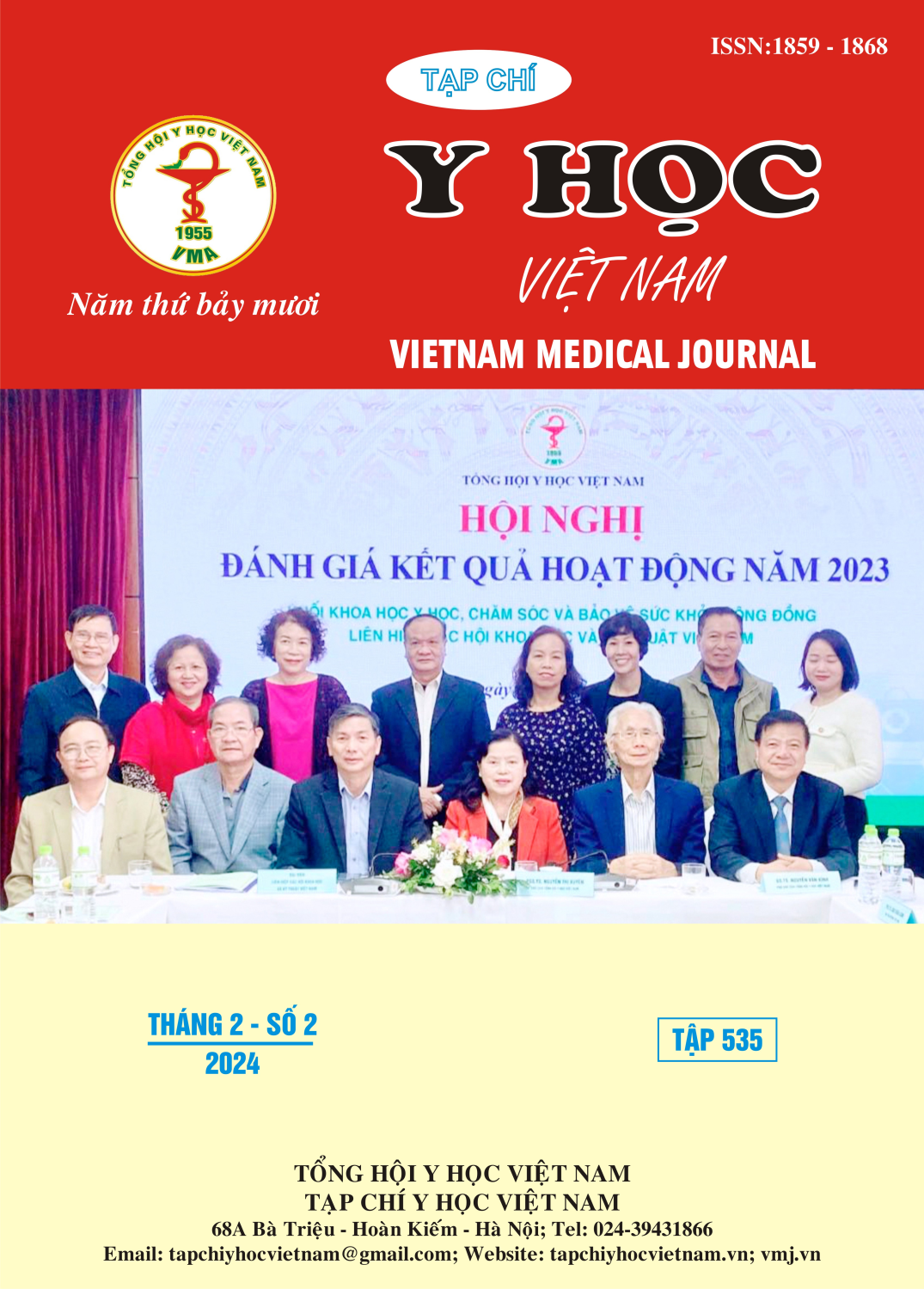CLINICAL CHARACTERISTICS OF INTERMITTENT EXOTROPIA OF DIVERGENCE EXCESS TYPE AND OUTCOME OF TREATMENT
Main Article Content
Abstract
Purpose: Evaluation of clinical characteristics of intermittent exotropia of divergence excess type and outcomes of treatment. Methods: Cross-sectional descriptive study in 20 patients with divergence excess type intermittent exotropia seen at the National institute of Ophthalmology during September 2022 to July 2023. Results: Average age of clinical visit of intermittent exotropia of divergence type was 5,04±2,29 years, emmetropia is the most common type of refractive error, followed by mild myopia, amblyopia percentage is 17,5%. Average exodeviation at near and distance are 12,00±9,97PD and 29,75±6,42PD respectively, after monocular occlusion, near exodeviation increased significantly, distance exodeviation slightly increased, 20,75 ± 6,94PD và 34,50 ± 5,89PD respectively. Average amount of increased deviation after monocular occlusion is 8,75 ± 3,11PD at near and 4,75 ± 2,95 PD at distance. Stereoacuity is present in 85% patients. Conclusion: The majority of intermittent exotropia of divergence excess type may develop at any age with mostly emmetropia, mild myopia or mild hyperopia. There are significant changes in near exodeviation after monocular occlusion and no significant changes in distance exodeviation
Article Details
Keywords
divergence excess, intermittent exotropia, distance/near exodeviation.
References
2. Bae GH, Bae SH, Choi DG. Surgical outcomes of intermittent exotropia according to exotropia type based on distance/near differences. PLoS ONE. 2019;14(3):e0214478. doi:10.1371/journal. pone.0214478
3. Lajmi H, Ben Yakhlef A, El Fekih L, Lahdhiri MH, Hmaied W. Outcomes of intermittent exotropia surgery. J Fr Ophtalmol. 2021;44(7): 1001-1007. doi:10.1016/j.jfo.2020.09.038
4. Magli A, Esposito Veneruso P, Chiariello Vecchio E, Esposito G, Rombetto L. Divergence Excess Intermittent Exotropia: Long-Term Effect of Augmented Bilateral Lateral Rectus Recession. Semin Ophthalmol. 2018;33(4):512-516. doi:10.1080/08820538.2017.1320414
5. Yang M, Chen J, Shen T, et al. Clinical Characteristics and Surgical Outcomes in Patients With Intermittent Exotropia: A Large Sample Study in South China. Medicine (Baltimore). 2016; 95 (5): e2590. doi: 10.1097/ MD.0000000000002590
6. Issaho DC, Wang SX, Weakley Jr. DR. Intermittent exotropia surgery: results in different age groups. Arq Bras Oftalmol. 2017;80(6). doi:10.5935/0004-2749.20170087
7. Jampolsky A. Surgical Management of Exotropia. Am J Ophthalmol; 1958.
8. Knapp P, Moore S. Intermittent exotropia. Am Orthopt J. 1960;10:118-122.
9. Pratt-Johnson J, Barlow J, Tillson G. Early Surgery in Intermittent Exotropia. Am J Ophthalmol; 1977.
1.


